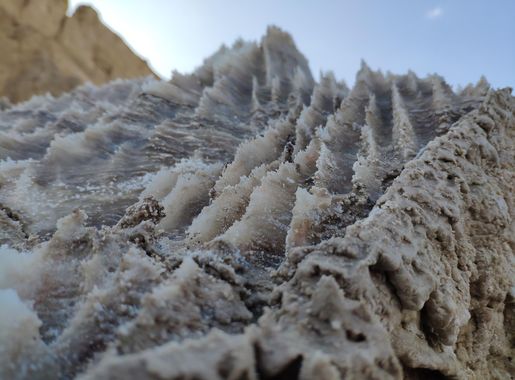
The Mystical Judean Desert: Israel's Timeless Oasis
Explore the Judean Desert: A breathtaking blend of natural beauty, ancient history, and spiritual tranquility in Israel's timeless oasis.
The Judean Desert is a stunning landscape that holds a unique blend of natural beauty and historical significance. This desert stretches from the eastern slopes of Jerusalem to the Dead Sea, offering breathtaking views and unparalleled serenity. The rolling dunes and rugged terrain are dotted with oases and ancient ruins, making it a haven for adventurers and history buffs alike. One of the standout attractions in the Judean Desert is the ancient fortress of Masada. Perched on a plateau overlooking the Dead Sea, this UNESCO World Heritage site tells the tale of Jewish resistance against Roman conquest. The hike up to Masada at sunrise is a must-do, providing panoramic views that are nothing short of spectacular. The desert is also home to the Ein Gedi Nature Reserve, a lush oasis with waterfalls, springs, and diverse wildlife. It's a perfect spot for hiking, swimming, and observing the unique flora and fauna that thrive in this arid environment. The nearby Dead Sea offers a surreal experience of floating effortlessly in its mineral-rich waters, known for their therapeutic properties. For a spiritual journey, the St. George Monastery, carved into the cliffs of Wadi Qelt, offers a glimpse into the early days of Christian monasticism. The serene setting and the ancient architecture make it a profound experience for visitors seeking peace and reflection.
Local tips in Judean Desert
- Visit Masada at sunrise for the best views and to avoid the midday heat.
- Bring plenty of water and sun protection; the desert climate can be harsh.
- Wear comfortable hiking shoes for exploring the rugged terrain.
- Check local guides for the best routes in Ein Gedi Nature Reserve.
- Float in the Dead Sea but avoid shaving a day prior to prevent stinging from the salt.
- Respect the local wildlife and do not feed the animals.
The Mystical Judean Desert: Israel's Timeless Oasis
The Judean Desert is a stunning landscape that holds a unique blend of natural beauty and historical significance. This desert stretches from the eastern slopes of Jerusalem to the Dead Sea, offering breathtaking views and unparalleled serenity. The rolling dunes and rugged terrain are dotted with oases and ancient ruins, making it a haven for adventurers and history buffs alike. One of the standout attractions in the Judean Desert is the ancient fortress of Masada. Perched on a plateau overlooking the Dead Sea, this UNESCO World Heritage site tells the tale of Jewish resistance against Roman conquest. The hike up to Masada at sunrise is a must-do, providing panoramic views that are nothing short of spectacular. The desert is also home to the Ein Gedi Nature Reserve, a lush oasis with waterfalls, springs, and diverse wildlife. It's a perfect spot for hiking, swimming, and observing the unique flora and fauna that thrive in this arid environment. The nearby Dead Sea offers a surreal experience of floating effortlessly in its mineral-rich waters, known for their therapeutic properties. For a spiritual journey, the St. George Monastery, carved into the cliffs of Wadi Qelt, offers a glimpse into the early days of Christian monasticism. The serene setting and the ancient architecture make it a profound experience for visitors seeking peace and reflection.
When is the best time to go to Judean Desert?
Iconic landmarks you can’t miss
Masada National Park
Explore the rich history and stunning landscapes of Masada National Park, a must-visit UNESCO site overlooking the Dead Sea.
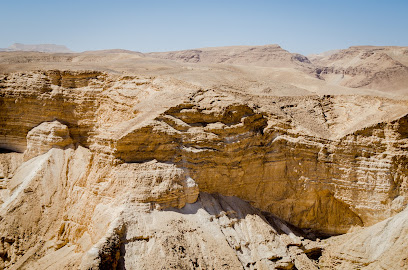
Qumran National Park
Explore the ancient ruins of Qumran National Park, where history meets breathtaking desert landscapes in the heart of Israel.
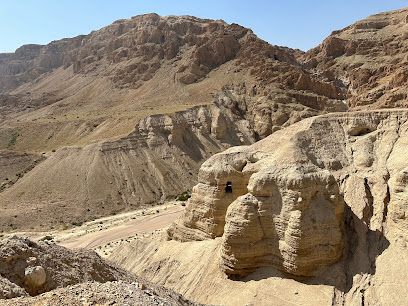
Kfar Hanokdim
Experience the magic of Kfar Hanokdim, a desert resort offering authentic Bedouin culture, stunning landscapes, and unforgettable adventures.

Ein Prat Nature Reserve
Explore the breathtaking landscapes and rich biodiversity of Ein Prat Nature Reserve, a serene escape in the heart of the Judean desert.
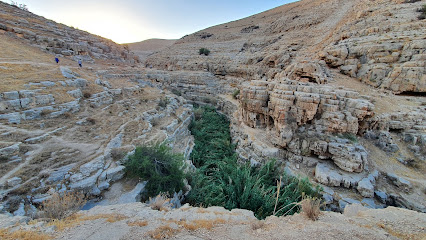
Herodion National Park
Discover the ancient ruins and breathtaking views at Herodion National Park, a historical gem in Israel that showcases King Herod's legacy.
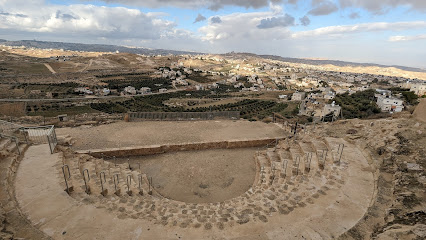
Isrotel Noga
Discover the perfect blend of luxury and nature at Isrotel Noga, your ideal retreat by the Dead Sea.

Wadi Arugot
Discover Wadi Arugot: A stunning desert oasis offering breathtaking hikes and tranquil waters in the heart of the Judean Desert.
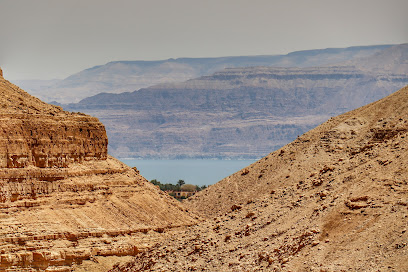
Mar Saba Monastery
Experience the serene beauty and rich history of Mar Saba Monastery, a spiritual haven in the heart of the Judean Desert.
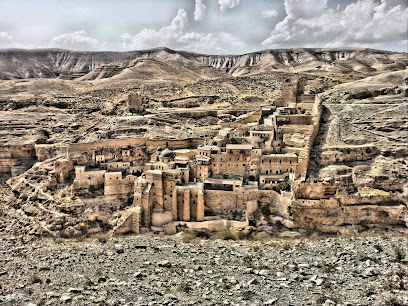
Deir al Krntl (monastery Krntl)
Discover the serene beauty of Deir al Krntl, an ancient monastery rich in history and spiritual significance, nestled in the heart of the region.
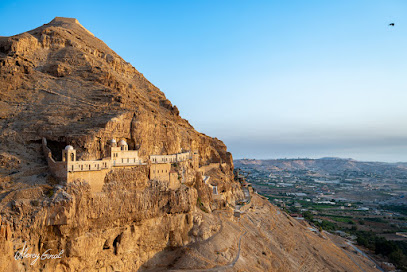
Museum of the Good Samaritan
Explore the Museum of the Good Samaritan: A captivating blend of history, culture, and stunning landscapes in Ma'ale Adumim.
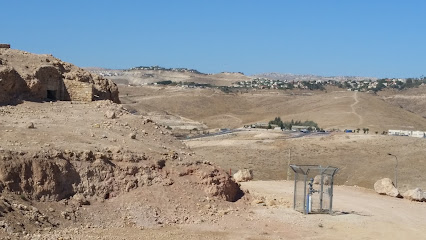
Center Ramat Negev Desert Agriculture
Discover the innovative farming practices and natural beauty of Ramat Negev Desert Agriculture, a unique ranch experience in the heart of the desert.
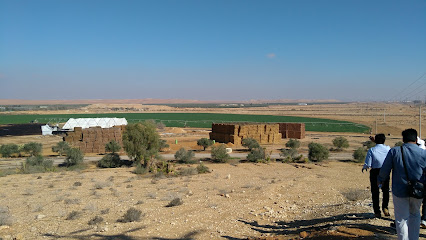
Monastery of Theodosius
Experience the serene beauty and rich history of the Monastery of Theodosius, a stunning retreat nestled in the hills of Israel.
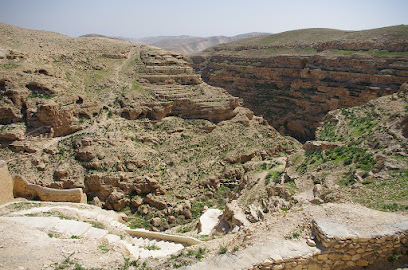
Negev
Experience the breathtaking beauty and rich history of the Negev Desert, Israel's stunning natural wonder, perfect for adventure and exploration.
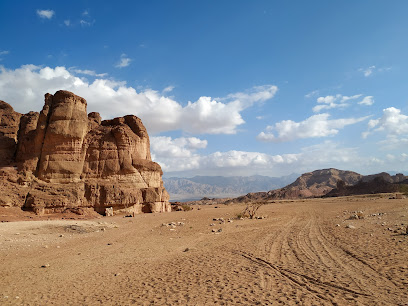
Gateway to the Negev
Explore the breathtaking Negev Desert from the Gateway to the Negev, your essential visitor center for adventure, culture, and history in Be'er Sheva.

בית ספר שדה - עין גדי
Experience the serenity of Ein Gedi at this charming Bed & Breakfast, surrounded by nature's beauty and rich history.
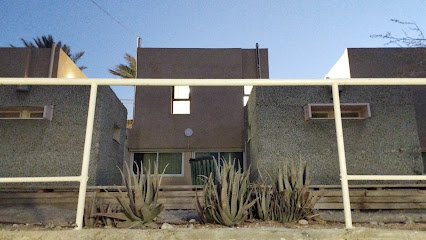
Unmissable attractions to see
Qumran National Park
Explore Qumran National Park, where ancient history meets stunning desert landscapes, home of the Dead Sea Scrolls and the Essenes.
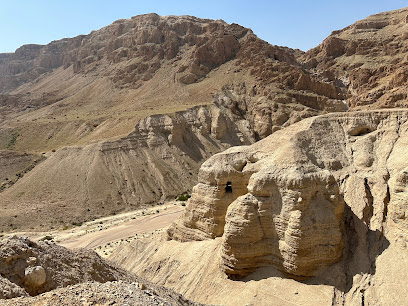
Apollonia National Park
Explore Apollonia National Park: A stunning blend of ancient ruins, scenic hiking trails, and breathtaking Mediterranean views near Herzliya.
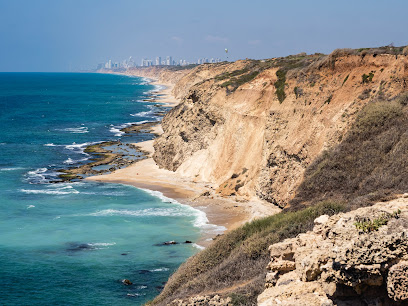
Qasr el Yahud
Explore Qasr el Yahud, a sacred site on the Jordan River, rich in Christian heritage and stunning natural beauty, perfect for spiritual reflection.

Kfar Hanokdim
Discover the enchanting Kfar Hanokdim, an oasis in the desert offering adventure, family-friendly activities, and stunning stargazing experiences.
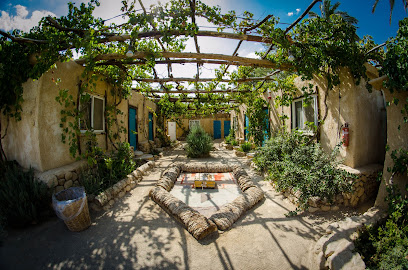
Ein Prat Nature Reserve
Explore Ein Prat Nature Reserve, a stunning oasis in the Judean Desert with lush landscapes, historical sites, and breathtaking views for nature enthusiasts.

שמורת טבע עיינות צוקים - עין פשח'ה
Discover the untouched beauty of Smotrich Nature Preserve, a serene escape just outside Jerusalem with stunning landscapes and diverse wildlife.
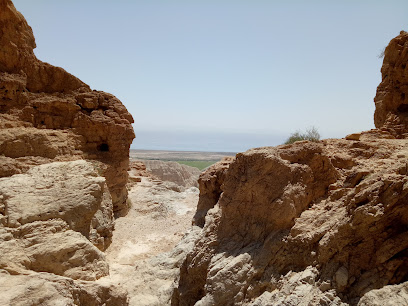
Pool of the Arches
Explore the Pool of the Arches in Ramla, a historical gem showcasing stunning architecture and rich cultural heritage amidst serene surroundings.
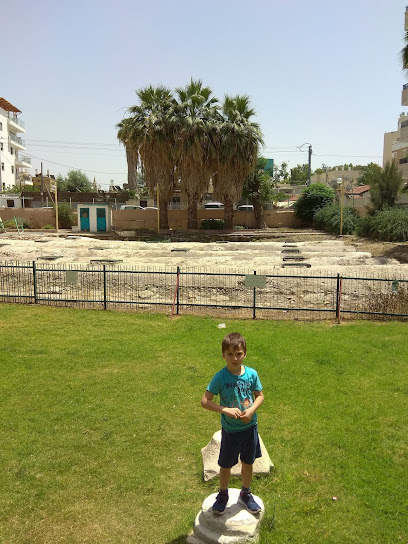
Wadi Arugot
Discover the breathtaking landscapes of Wadi Arugot, a stunning hiking area in the Judean Desert, perfect for nature lovers and adventure seekers.
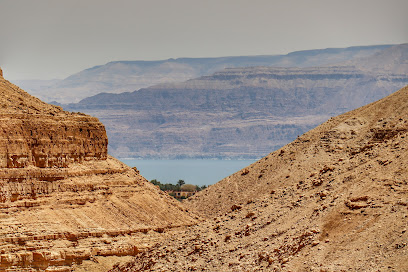
Madaba Visitors Center
Explore Madaba's rich history and stunning mosaics at the Madaba Visitors Center, your essential guide to this ancient Jordanian gem.
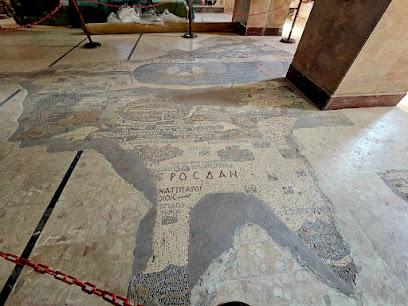
Tel Be’er Sheba
Explore the archaeological marvels of Tel Be'er Sheva, a UNESCO World Heritage site, where history and nature converge in the stunning Negev Desert.
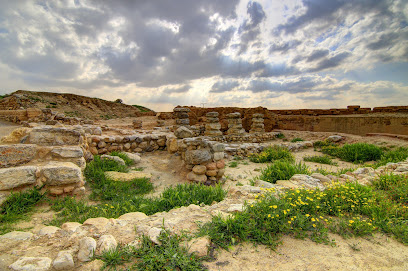
Ben-Gurion House
Explore the rich history of Israel through the lens of David Ben-Gurion at the Ben-Gurion House, a captivating museum in Tel Aviv.
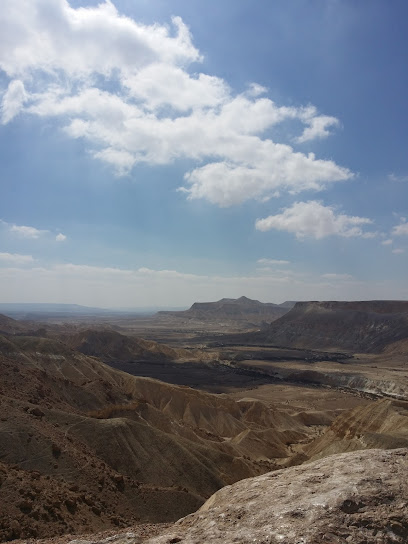
Apostles Church كنيسة الرسل
Discover the breathtaking mosaics and historic architecture of the Apostles Church, a key landmark in Madaba's rich cultural tapestry.
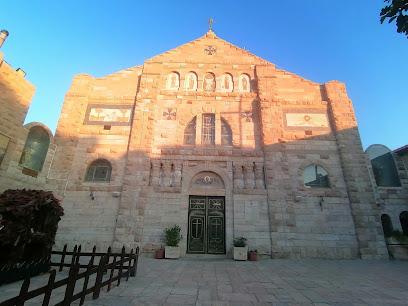
Deir al Krntl (monastery Krntl)
Explore Deir al Krntl, an enchanting monastery in Israel, where history and spirituality converge amidst stunning landscapes.

HaHolot Park
HaHolot Park: A tranquil oasis in Rishon LeTsiyon, perfect for relaxation, recreation, and family-friendly activities amidst beautiful landscapes.
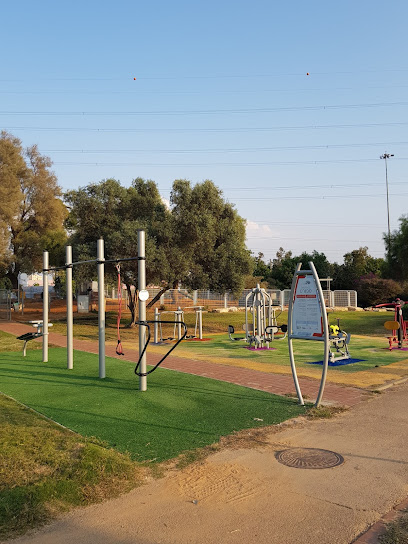
Maresha
Uncover the historical wonders and natural beauty of Maresha, an exhilarating hiking attraction in Israel perfect for all adventurers.
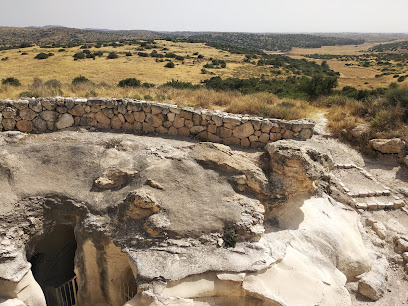
Essential places to dine
Derech HaGefen
Discover authentic Italian flavors at Derech HaGefen in the stunning Judean Hills – where culinary excellence meets breathtaking scenery.
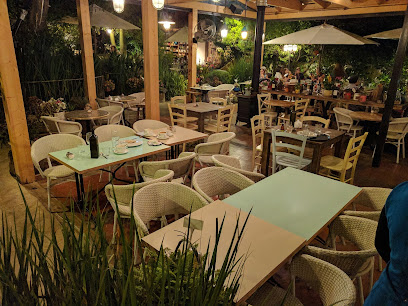
Moshbutz
Discover Moshbutz: A premier dining destination in Ramot offering exquisite local flavors and international cuisine with fresh ingredients.
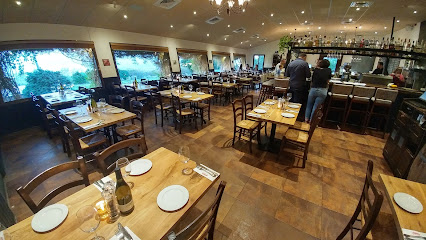
Kimmel BaGilboa
Experience exquisite dining at Kimmel BaGilboa, where gourmet cuisine meets stunning mountain vistas in Israel's breathtaking Gilboa region.
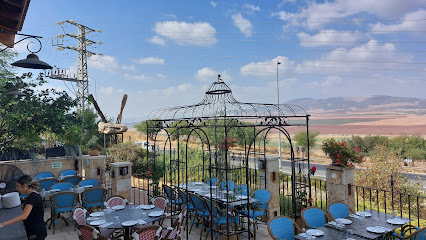
Shila
Discover the culinary artistry at Shila, Tel Aviv's top seafood and fine dining destination offering fresh flavors in an elegant setting.
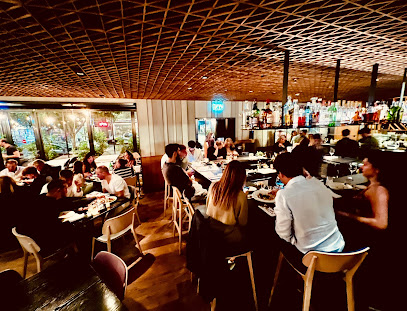
Pundak Neot Smadar Inn Neot Semadar
Experience tranquility at Pundak Neot Smadar – your oasis for organic delights and cozy stays amidst nature's beauty.
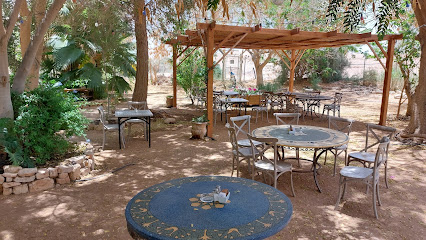
Ben-Sira Hummus
Experience authentic Israeli flavors at Ben-Sira Hummus - where deliciousness meets affordability in the heart of Jerusalem.
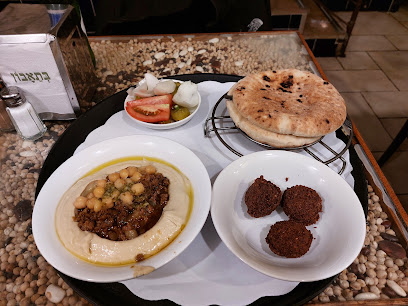
Magdalena restaurant
Discover the exquisite flavors and stunning views at Magdalena Restaurant in Migdal - a culinary gem in Israel's Galilee.

Taj Mahal
Discover authentic Middle Eastern flavors at Taj Mahal in Ein Bokek—where delicious food meets breathtaking desert views.
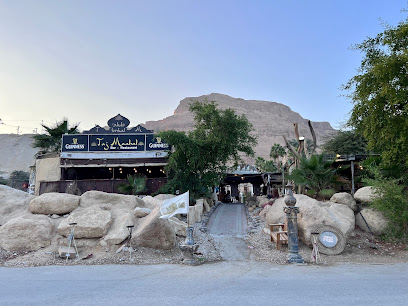
Deja Bu - דז'ה בו
Experience the vibrant flavors of Jerusalem at Deja Bu - where modern cuisine meets traditional tastes in a lively atmosphere.

JahnunBar
Discover authentic Yemeni flavors at JahnunBar, Jerusalem's top destination for vegetarian and vegan delights in an inviting atmosphere.
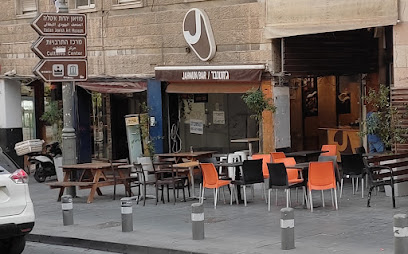
The Eucalyptus
Experience authentic Israeli flavors at The Eucalyptus in Jerusalem, where biblical-inspired dishes meet modern Mediterranean cuisine.
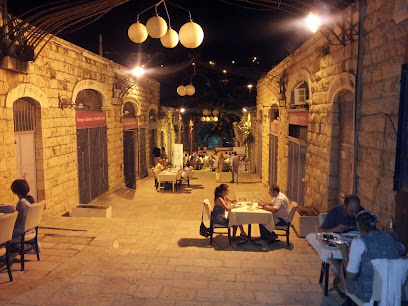
Animar
Discover Animar: An exquisite dining experience in Tel Aviv offering innovative Mediterranean cuisine and exceptional service.
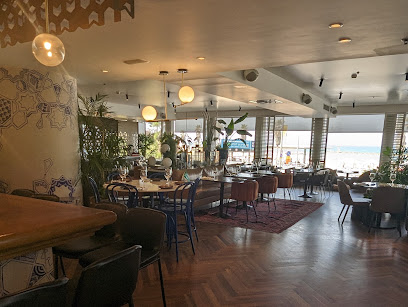
Agadir Burger
Discover delightful burgers with stunning views at Agadir Burger near the Dead Sea – a culinary gem for every traveler.
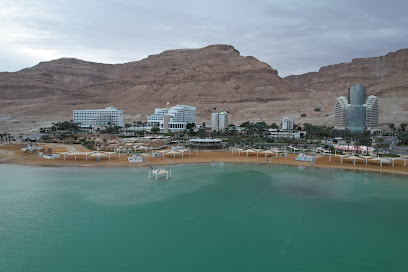
Rama's Kitchen
Experience exquisite Mediterranean cuisine at Rama's Kitchen in Nataf, where fresh ingredients meet breathtaking views.
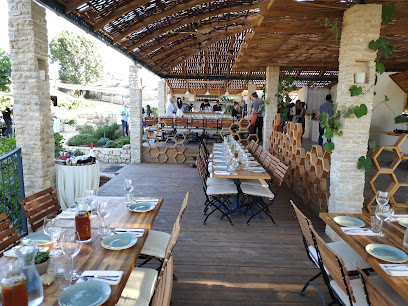
Majda
Discover Majda in Ein Rafa: A top-tier restaurant offering exquisite Israeli cuisine with fresh local ingredients and exceptional service.
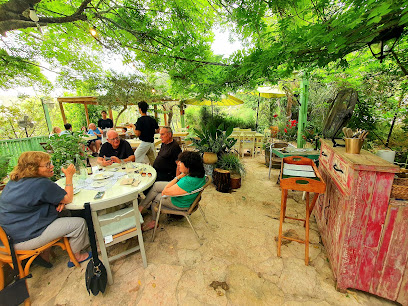
Markets, malls and hidden boutiques
Ice Mall
Experience the thrill of shopping and entertainment at Ice Mall Eilat, featuring unique shops, dining, and an exhilarating ice rink.
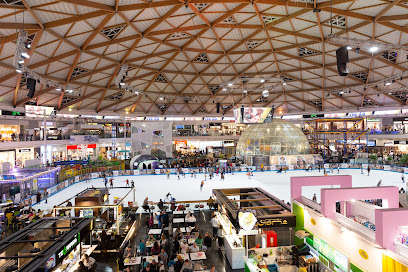
Azrieli Mall
Discover Azrieli Mall, a vibrant shopping destination in Tel Aviv with diverse stores, delicious dining, and entertaining experiences for every visitor.

Alrov Mamilla Avenue
Discover Alrov Mamilla Avenue: A premier shopping destination merging modern retail with the rich history of Jerusalem, perfect for tourists seeking unique experiences.

Sharonim
Explore Sharonim Mall in Hod Hasharon for a delightful shopping experience with diverse stores, delicious dining options, and vibrant entertainment.
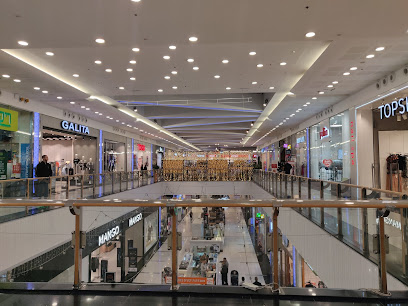
Big Carmiel
Discover Big Carmiel: A premier shopping destination in Karmiel, Israel, offering diverse stores, dining, and entertainment for a perfect day out.
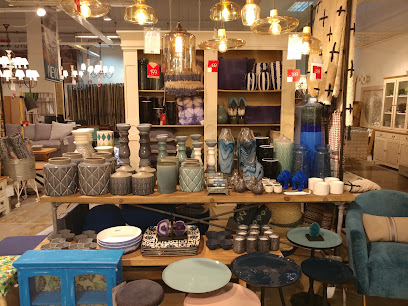
BIG Regba
Explore BIG Regba, an all-in-one shopping mall in Israel offering diverse shops, delightful dining, and exciting entertainment for every visitor.
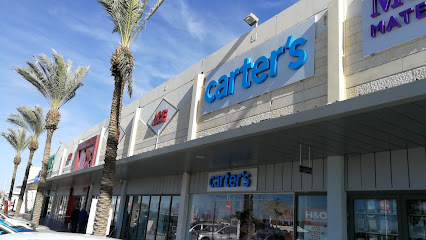
Oshiland Mall
Explore Oshiland Mall: A Shopping Paradise in Kefar Sava with Diverse Stores, Dining, and Entertainment Options.

Dizengoff Center
Discover the heart of Tel Aviv at Dizengoff Center, where shopping, dining, and vibrant culture come together in a unique experience.
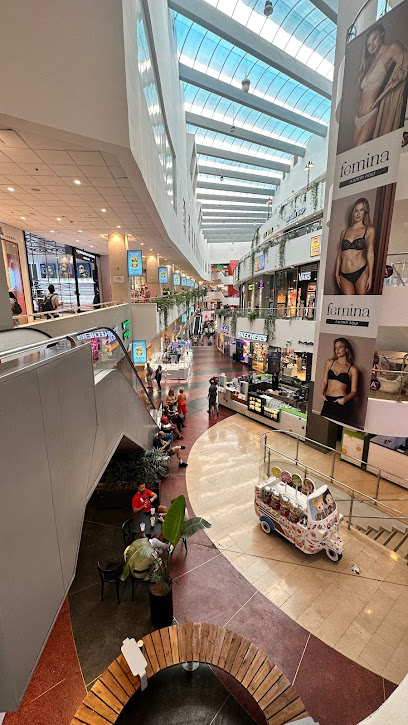
Zak’s Jerusalem Gifts
Explore Zak’s Jerusalem Gifts for a unique selection of antiques and souvenirs that encapsulate the spirit of Jerusalem.
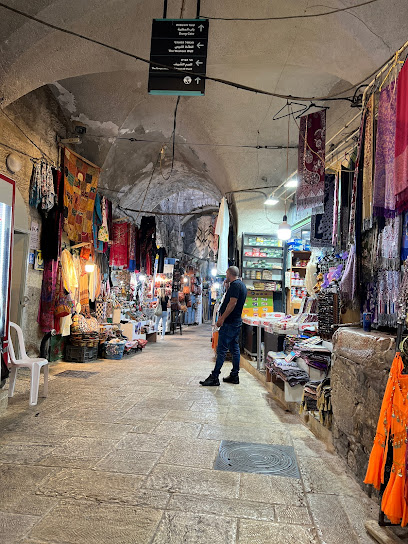
ננו תכשיטים
Explore the exquisite world of handcrafted jewelry at Nano Jewelry in Tel Aviv, where personal expression meets artistic design.
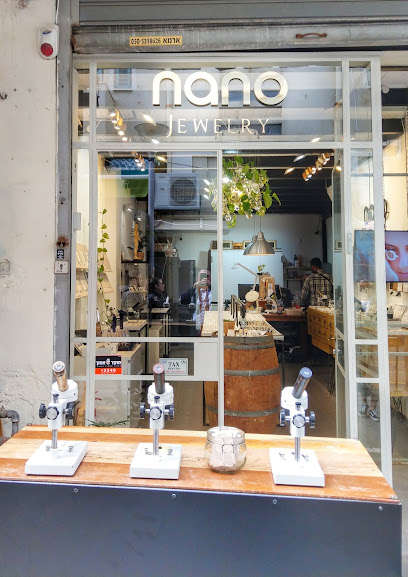
The Book Gallery
Explore literary treasures at The Book Gallery, Jerusalem's rare book store featuring unique finds and a rich history for book lovers.
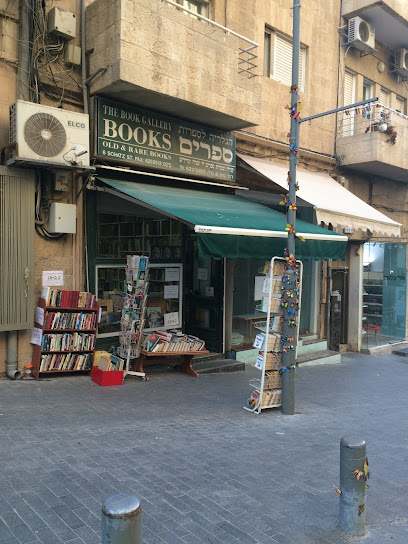
Baltinester Jewish Jewelry & Judaica in Jerusalem
Explore authentic Jewish jewelry and Judaica treasures at Baltinester in Jerusalem, where tradition meets exquisite craftsmanship.
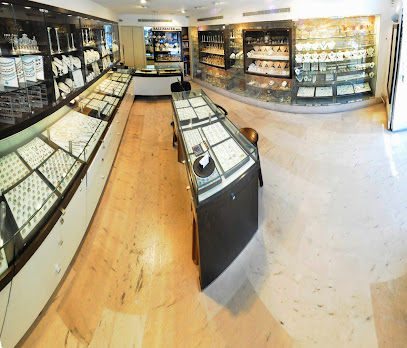
Adina Plastelina Jewelry
Discover Adina Plastelina Jewelry in Tel Aviv-Yafo, where ancient art meets contemporary craftsmanship in exquisite handmade pieces.
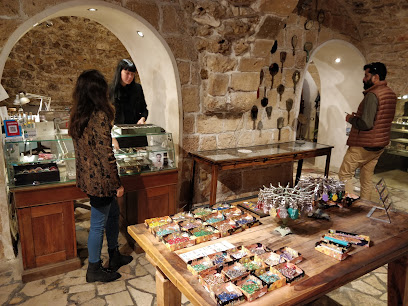
יונת מדבר - בית מלאכה וסדנאות לרוקחות טבעית ומסורתית
Explore the enchanting world of natural crafting and herbalism at Yonat Midbar, an art studio in Arad, Israel, where creativity meets tradition.
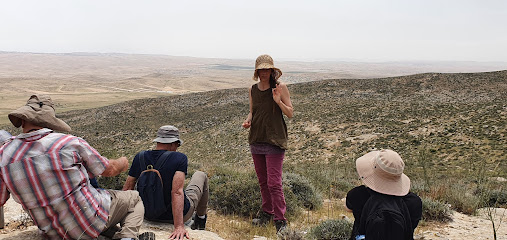
Norman & Bella
Discover the artistic flair of Tel Aviv at Norman & Bella, a store offering unique local creations and stylish decor that reflect Israeli culture.
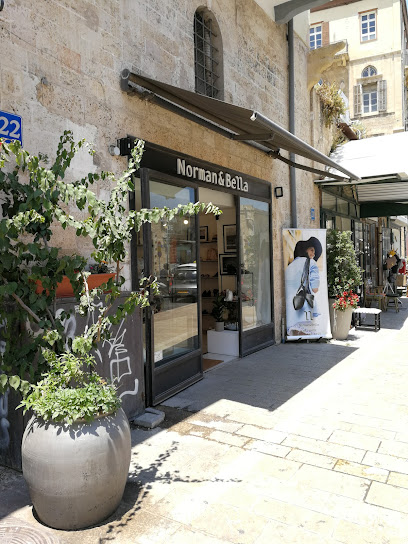
Essential bars & hidden hideouts
BeerBazaar Jerusalem
Discover the vibrant world of craft beer at BeerBazaar Jerusalem, a brewpub offering an extensive selection, delicious food, and a charming beer garden.
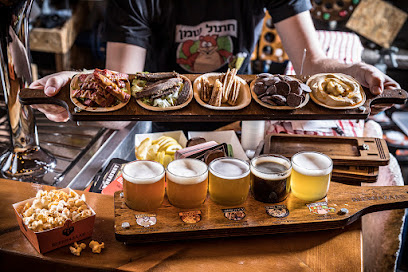
Deja Bu - דז'ה בו
Experience the vibrant atmosphere of Deja Bu, a bar and restaurant in Jerusalem offering diverse cuisine and a lively ambiance for all visitors.
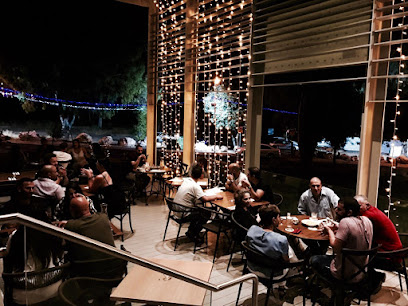
Gatsby Cocktail Room
Discover the sophisticated Gatsby Cocktail Room in Jerusalem, where innovative mixology meets a chic atmosphere for an unforgettable nightlife experience.
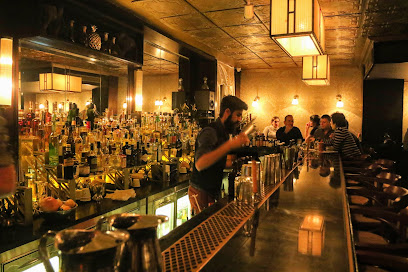
Mike's Place
Mike's Place: A lively sports bar in Jerusalem, perfect for enjoying games, drinks, and delicious food in a vibrant atmosphere.
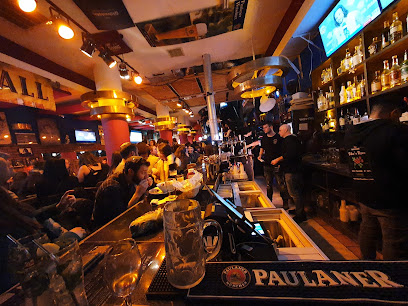
Dublin Irish Pub
Discover authentic Irish culture and cuisine at Dublin Irish Pub in Jerusalem, where great food, drinks, and live music await.
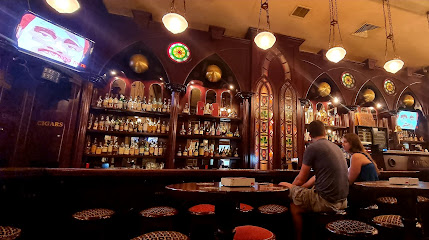
Tzina Bar
Discover Tzina Bar, a vibrant nightlife destination on Dizengoff Street in Tel Aviv, perfect for cocktails, local bites, and lively socializing.

Mazkeka
Mazkeka: Experience the heartbeat of Jerusalem with live music, great food, and a creative vibe in this unique café and recording studio.
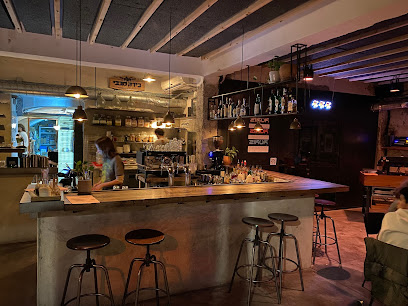
Gent Kitchen & Bar
Discover the vibrant flavors and lively atmosphere at Gent Kitchen & Bar in Jerusalem, where great food meets a spirited nightlife.
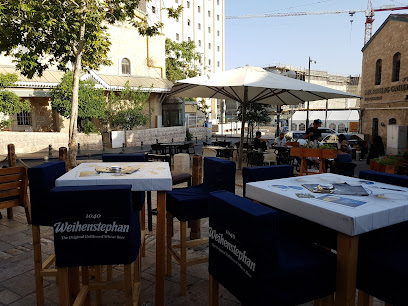
Glen Whisk(e)y bar
Discover the vibrant Glen Whisk(e)y Bar in Jerusalem, where exceptional whiskies and a lively atmosphere await every visitor.

Barrel & The tap
Discover the vibrant nightlife of Jerusalem at Barrel & The Tap, where craft beers and delicious pub fare await in a lively atmosphere.
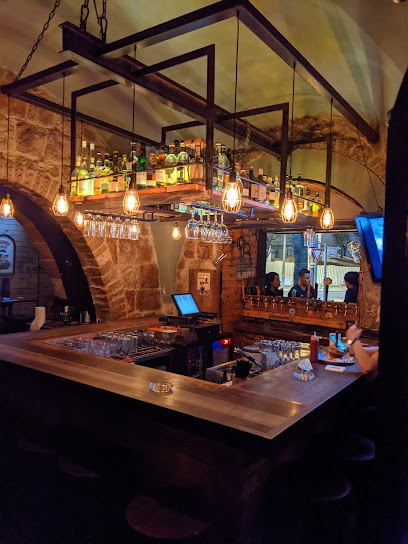
Notre Dame Rooftop Restaurant
Experience the breathtaking views and exquisite flavors at Notre Dame Rooftop Restaurant in Jerusalem, where history meets culinary art.
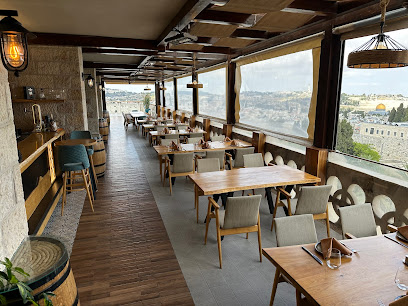
Wine Bar
Experience the finest selection of local and international wines at the Wine Bar in Jerusalem, a perfect blend of taste and ambiance for wine lovers.
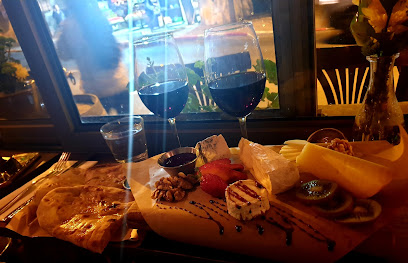
Andalucia Cocktail Bar
Discover the vibrant Andalucia Cocktail Bar in Jerusalem, where tapas and cocktails come together in a lively Spanish-inspired atmosphere.

Yudale
Experience the vibrant nightlife of Jerusalem at Yudale, a lively bar offering exquisite drinks and a welcoming atmosphere.
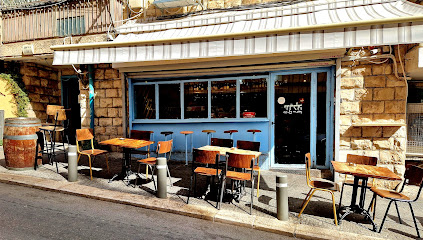
Half parrot
Discover the vibrant nightlife of Jerusalem at Half Parrot, a lively bar with an extensive drink menu and eclectic atmosphere.
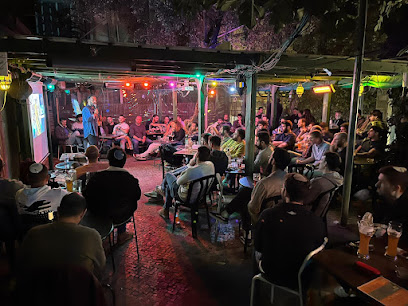
Local Phrases about Judean Desert
-
- Helloשָׁלוֹם
[shalom] - Goodbyeלְהֵיתָרַע
[lehitra'ot] - Yesכֵּן
[ken] - Noלֹא
[lo] - Please/You're welcomeבבקשה
[bevakasha] - Thank youתּוֹדָה
[todah] - Excuse me/Sorryסליחה
[sliha] - How are you?אֵיך אתה?
[eich atah?] - Fine. And you?טוב. ואתה?
[tov. ve'ata?] - Do you speak English?אתה מדבר אנגלית?
[ata medaber anglit?] - I don't understandאני לא מבין
[ani lo mevin]
- Helloשָׁלוֹם
-
- I'd like to see the menu, pleaseאני רוצה לראות את התפריט, בבקשה
[ani rotse lir'ot et hatprit, bevakasha] - I don't eat meatאני לא אוכל בשר
[ani lo ochel basar] - Cheers!לחיים!
[lechayim!] - I would like to pay, pleaseאני רוצה לשלם, בבקשה
[ani rotse lishlem, bevakasha]
- I'd like to see the menu, pleaseאני רוצה לראות את התפריט, בבקשה
-
- Help!עזור!
[ezor!] - Go away!לך לך!
[lech lech!] - Call the Police!קרא למשטרה!
[kra lemishtara!] - Call a doctor!קרא לרופא!
[kra lerofe!] - I'm lostאני אבוד
[ani avud] - I'm illאני חולה
[ani holeh]
- Help!עזור!
-
- I'd like to buy...אני רוצה לקנות...
[ani rotse liknot...] - I'm just lookingאני רק מסתכל
[ani rak mistakel] - How much is it?כמה זה עולה?
[kama ze ole?] - That's too expensiveזה יקר מדי
[ze yikar madi] - Can you lower the price?אתה יכול להוריד את המחיר?
[ata yachol lehorid et ha'machir?]
- I'd like to buy...אני רוצה לקנות...
-
- What time is it?מה השעה?
[ma hasha'a?] - It's one o'clockזה שעה אחת
[ze sha'a achat] - Half past (10)חצי (עשר)
[chatzi (eser)] - Morningבוקר
[boker] - Afternoonצהריים
[tzohorayim] - Eveningערב
[erev] - Yesterdayאתמול
[etmol] - Todayהיום
[hayom] - Tomorrowמחר
[machar] - 1אחד
[echad] - 2שניים
[shnayim] - 3שלושה
[shaloshah] - 4ארבעה
[arbahah] - 5חמישה
[chamishah] - 6שישה
[shishah] - 7שבעה
[shiv'ah] - 8שמונה
[shmoneh] - 9תשעה
[tish'ah] - 10עשרה
[esreh]
- What time is it?מה השעה?
-
- Where's a/the...?איפה נמצא/ת...
[eifo nimtza/t...] - What's the address?מה הכתובת?
[ma hakatavat?] - Can you show me (on the map)?אתה יכול להראות לי (על המפה)?
[ata yachol leharot li (al hamapa)?] - When's the next (bus)?מתי האוטובוס הבא?
[matay ha'otobus haba?] - A ticket (to ....)כרטיס (ל....)
[kartis (le....)]
- Where's a/the...?איפה נמצא/ת...
History of Judean Desert
-
The Judean Desert, one of the oldest inhabited regions in the world, has seen human activity dating back to the Stone Age. Evidence of early human settlements, including tools and remnants of ancient dwellings, speaks to the region's role in the dawn of civilization. The desert served as a crossroads for various nomadic tribes, fostering a melting pot of cultures and traditions.
-
During the intertestamental period, the Judean Desert witnessed the rise of the Hasmonean dynasty. The Maccabean Revolt, led by Judas Maccabeus, was a pivotal movement against the Hellenistic influence of the Seleucid Empire. The Hasmoneans established an independent Jewish kingdom, and their legacy is embedded in the desert's historical narrative.
-
Herod the Great, the Roman-appointed King of Judea, left an indelible mark on the Judean Desert with the construction of the fortress at Masada. Built between 37 and 31 BCE, Masada served as a palace and refuge, exemplifying Herod's architectural genius. The site later became an emblem of Jewish resistance during the First Jewish–Roman War, where the Sicarii rebels made their last stand against the Romans.
-
The discovery of the Dead Sea Scrolls in 1947 near the ancient settlement of Qumran revolutionized our understanding of Jewish history and early Christianity. The scrolls, dating from the 3rd century BCE to the 1st century CE, include some of the oldest known manuscripts of the Hebrew Bible. The Qumran community, often associated with the Essenes, lived a monastic life of asceticism and religious devotion, contributing significantly to Jewish theological thought.
-
The Byzantine period saw the Judean Desert become a haven for Christian monasticism. The desert fathers, seeking solitude and spiritual purity, established monasteries and hermitages throughout the region. Notable sites include the Monastery of St. George in Wadi Qelt and Mar Saba, founded by Saint Sabas in the 5th century CE. These monastic communities played a vital role in the spiritual and cultural development of early Christianity.
-
The Nabateans, an ancient Arab people, capitalized on the Judean Desert's strategic location by controlling the lucrative spice trade routes. Their advanced knowledge of desert agriculture and water conservation allowed them to thrive in the arid landscape. The remnants of Nabatean fortresses, caravanserais, and water systems can still be seen today, showcasing their ingenuity and adaptability.
-
The 20th and 21st centuries have brought significant archaeological exploration to the Judean Desert. Scholars and explorers have uncovered a wealth of artifacts and historical insights, deepening our understanding of the region's diverse past. Noteworthy discoveries include additional Dead Sea Scrolls, ancient coins, and remnants of early Christian monastic sites, continually enriching the historical tapestry of the Judean Desert.
Judean Desert Essentials
-
The Judean Desert is located in the eastern part of Israel, between the central mountains and the Dead Sea. The nearest major city is Jerusalem. The closest international airport is Ben Gurion Airport, located approximately 50 kilometers northwest of Jerusalem. From the airport, you can take a taxi, shuttle, or rent a car to reach Jerusalem. From Jerusalem, you can take a bus or drive to the Judean Desert. Egged bus services operate routes from Jerusalem to various destinations in the desert, including the Dead Sea, Masada, and Ein Gedi.
-
While exploring the Judean Desert, renting a car offers the most flexibility and convenience. Car rentals are available at Ben Gurion Airport and in Jerusalem. Public transportation options include buses operated by Egged, which connect Jerusalem with major sites in the desert. Taxis and organized tours are also available for those who prefer not to drive. Keep in mind that some remote areas may require a 4x4 vehicle.
-
The official currency in Israel is the Israeli New Shekel (ILS). Credit cards are widely accepted in hotels, restaurants, and shops in tourist areas. However, it is advisable to carry some cash, especially when visiting remote desert sites where card payment facilities may be limited. ATMs are available in major cities and tourist hotspots like the Dead Sea resorts.
-
The Judean Desert is generally safe for tourists. However, it is important to stay hydrated, wear appropriate clothing, and avoid hiking alone. Crime rates are low, but it's always best to remain vigilant, especially in crowded tourist areas. Avoid visiting areas close to the political borders. Check travel advisories for any updates on safety and security.
-
In case of emergency, dial 100 for police, 101 for medical emergencies, and 102 for fire services. It is highly recommended to have travel insurance that covers medical emergencies. The nearest hospitals are in Jerusalem, and emergency medical services can be accessed in tourist areas such as the Dead Sea resorts. For minor health issues, pharmacies are available in larger towns and tourist centers.
-
Fashion: Do wear light, breathable clothing and a hat to protect against the sun. Avoid overly revealing clothing when visiting religious sites. Religion: Do respect local customs and traditions. Cover your head and shoulders when entering religious sites. Public Transport: Do be respectful and give up your seat to elderly passengers. Do not eat or drink on public transport. Greetings: Do greet people with a handshake. Using 'Shalom' as a greeting is appreciated. Eating & Drinking: Do try local dishes and accept food offerings graciously. Do not refuse hospitality, as it is considered impolite.
-
To experience the Judean Desert like a local, consider visiting lesser-known sites such as the Mar Saba Monastery or the Ein Prat Nature Reserve. Engage with local Bedouin communities to learn about their culture and traditions. Always carry plenty of water and a good map or GPS device, as mobile reception can be spotty in some areas. Sunrise and sunset hikes offer breathtaking views and cooler temperatures.
Trending Landmarks in Judean Desert
-
Masada National Park
-
Qumran National Park
-
Kfar Hanokdim
-
Ein Prat Nature Reserve
-
Herodion National Park
-
Isrotel Noga
-
Wadi Arugot
-
Mar Saba Monastery
-
Deir al Krntl (monastery Krntl)
-
Museum of the Good Samaritan
-
Center Ramat Negev Desert Agriculture
-
Monastery of Theodosius
-
Negev
-
Gateway to the Negev
-
בית ספר שדה - עין גדי
Nearby Cities to Judean Desert
-
Things To Do in Jerusalem
-
Things To Do in Dead Sea
-
Things To Do in Ein Gedi
-
Things To Do in Modi'in
-
Things To Do in Masada
-
Things To Do in Madaba
-
Things To Do in Salt
-
Things To Do in Holon
-
Things To Do in Ramat Gan
-
Things To Do in Ashdod
-
Things To Do in Hod Hasharon
-
Things To Do in Amman
-
Things To Do in Jaffa
-
Things To Do in Kfar Saba
-
Things To Do in Tel Aviv







